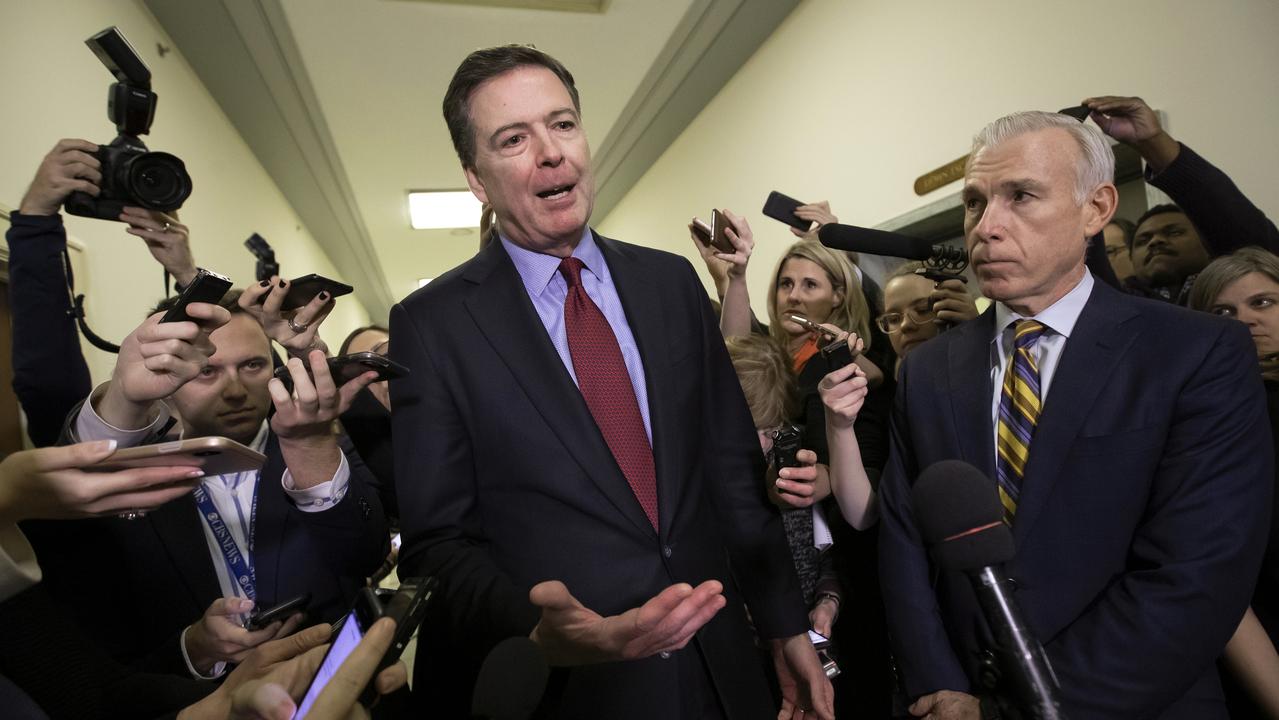Political climate gets hot as global emissions targets face hard tests
Tony Abbott’s verdict on the Paris climate deal makes sense to many Australians.

The climate-change elite jet in to a different city each year to keep alive a global commitment to moderating human impact on the environment. Mostly the UN Climate Change Conference is a bureaucratic, technical gathering. But every few years there is a meeting that matters.
The catastrophe in Copenhagen in 2009, when a global agreement everyone expected crashed and burned, was one. This was followed by the Durban conference in 2011, which agreed to keep the process alive. In Paris in 2015, aggressive politicking by then US president Barack Obama and secretary of state John Kerry brought China, India and the rest of the world into a hugely symbolic, though not binding, global compact.
This year is supposed to bring another watershed moment for the UN process in which the rules governing how nations will monitor and report on the implementation of their pledged carbon dioxide reductions under the Paris Agreement are set.
The fact that December’s meeting is to be held in Poland, a European coal centre ranked at the bottom of regional climate action, does not bode well.
Brinkmanship ensures that nothing happens until the last minute at UN climate conferences, but five months out the signs are not promising. The US, which brought the glue to Paris, has announced it will exit the Paris deal. President Donald Trump has left open the prospect of rejoining a revised agreement if greater obligations are put on China and India.

Developing nations, however, remain more interested in finalising details of a promised fund of $US100 billion ($136bn) a year, paid for by the developed world and industry.
They are equally determined to preserve a foundation principle of the UN process that developed and developing nations face different circumstances and therefore have different responsibilities.
Against this backdrop, global carbon dioxide emissions are back on the rise. New coal-fired power stations may be off the agenda in developed nations but are springing up like mushrooms across Asia, mostly funded by China.
Coal and oil prices are rising and energy stocks have recently replaced tech giants as the darlings on Wall Street.
Australia, meanwhile, remains paralysed by debate about whether it is doing enough on the one hand, and concern about doing too much on the other. In a speech to the Australian Environment Foundation on Tuesday, Tony Abbott said without the US, Australia should leave the Paris Agreement.

“When the world’s leading country withdraws, it can hardly be business as usual,” the former Liberal prime minister said. “Our 2015 target, after all, was set on the basis that the agreement would be applicable to all … parties. Absent the US, my government would not have signed up to the Paris treaty, certainly not with the present target.
“Yet as long as we remain in the Paris Agreement — which is about reducing emissions, not building prosperity — all policy touching on emissions will be about their reduction, not our wellbeing.
“It’s the emissions obsession that’s at the heart of our power crisis and it’s this that has to end.”
Abbott added: “It would be the height of folly to suppress living standards, shrink industries and drive jobs offshore for a moral gesture.”
Nothing Australia did to reduce emissions would make the slightest difference to climate, he said. “Of global emissions, China is responsible for 28 per cent, the US 15 per cent, Europe 11 per cent, India 7 per cent and Australia 1.3 per cent,” Abbott said.
“A 26 per cent cut to 1.3 per cent is a statistical blip, so why not scale back our cut to 20 per cent, or to 15 per cent, or to zero; or to whatever would actually be achieved in 2030 through normal business cost-cutting and efficiencies plus whatever is delivered through the emissions-reduction fund?”
Abbott’s view may be dismissed as heresy by many but Newspoll surveys ahead of the Queensland election in October showed strong community support for getting out of Paris. The poll found 45 per cent of Australians would support abandoning the non-binding Paris target if it meant lower household electricity prices. It also found 40 per cent said they would oppose opting out of the agreement, with 15 per cent of people uncommitted.
More than a third of Labor voters backed ditching the Paris target when asked to consider whether the economic cost outweighed the likely benefit, while 54 per cent of Coalition voters backed withdrawing from the agreement if it did. The survey found 70 per cent of One Nation voters supported ditching the treaty if this action led to lower electricity prices.

Nonetheless, Abbott is regarded by many in the media as a lunatic on the issue.
Australia’s Paris target is to reduce emissions by 26-28 per cent on 2005 levels by 2030. This target represents a 50-52 per cent reduction in emissions per capita and a 64-65 per cent reduction in the emissions intensity of the economy between 2005 and 2030.
In its seventh national report on climate change to the UN in December, Australia said its efforts were having a positive effect. National per capita emissions were declining as a result of government policies, “an overall decline in land clearing, and structural changes in Australia’s economy including a move away from manufacturing and heavy industrial activities for export’’.
The full cost of meeting Australia’s emissions obligations is difficult to quantify. It is generally accepted that high electricity prices are here to stay. Fears that Australia will continue to lose its heavy industry and manufacturing base have been a key feature of debate over the national energy guarantee. The NEG only represents cuts to stationary power sector emissions. Proportionate cuts to emissions from transport and agriculture are yet to come.
Against this is the potential for new economic activity in areas such as land care, renewable energy and energy efficiency. Environment ambassador Peter Suckling told the Climate Leadership Conference in Sydney in March: “For those that argue the costs should preclude action … there will be increasing costs from inaction. The cost of doing nothing is not nothing.
“Inaction could see potentially catastrophic costs of climate change, and the Paris Agreement says the world gets this.”
Many, including state governments, the federal opposition and the Greens, still argue that Australia is not going far enough.
But according to the Environment Department, Australia’s target will exceed those of the US, Japan, the EU, South Korea, and Canada on a reduction in per person and emissions-intensity basis.
“This is a significant achievement given that emissions are linked with population and economic growth, and Australia’s population and economy are growing faster than most other developed countries,” the department says.
A paper by Cory Bradshaw from the University of Adelaide, published in Asia and the Pacific Policy Studies last year, highlights the challenge posed by Australia’s growing population.
If the population grows at the average rate it reached between 1971 and 2014, it will hit 75.9 million in 2100.
If the population grows at the average rate it did between 2006 and 2014, the total in 2100 will be 104.2 million.
Migrants to Australia tend to increase their energy consumption and therefore carbon dioxide emissions. Bradshaw says Australia has no credible mechanisms in place to achieve its carbon reduction goals, which top out at 80 per cent by 2050.
More population growth driven by immigration will hamper Australia’s ability to meet its commitments and worsen its already stressed ecosystems, unless a massive technological transformation of Australia’s energy sector is immediately forthcoming, Bradshaw argues.
Nuclear energy is cited as the most promising solution.
But it says even a complete decarbonisation of the nation’s electricity production will not be enough to meet a 2050 target of an 80 per cent reduction.
The challenge is proving equally daunting in Europe. Recent analysis by CAN Europe, a collection of civil society climate groups, says all EU countries are failing to increase their climate action in line with the Paris Agreement goal.
“No single EU country is performing sufficiently in both ambition and progress in reducing carbon emissions,” the report says.
Most countries that advocate for more ambitious policies for the future are lagging behind in achieving targets for 2020, it adds. Conference host Poland scores the lowest on all measures.
In Germany, meanwhile, Energy Minister Peter Altmaier has cautioned the EU against setting overly ambitious targets.
“Citizens across Europe are losing faith in politics,” Altmaier said. “When they see that we are setting very ambitious targets and that a few years later we’re deferring this, we are way off their expectations.”
And in Canada, Ontario’s new Premier, Doug Ford, has taken an Abbott-like axe to his state’s climate actions.
“I made a promise to the people that we would take immediate action to scrap the cap-and-trade carbon tax and bring their gas prices down,” Ford said last month. “Today, I want to confirm that as a first step to lowering taxes in Ontario, the carbon tax’s days are numbered.”
Ford also announced that Ontario will be serving notice of its withdrawal from the joint agreement linking Ontario, Quebec and California’s cap-and-trade markets as well as the pro-carbon tax Western Climate Initiative.
Abbott’s argument is that a non-binding Paris deal is a flimsy basis on which to undertake reforms without taking strong heed of the economic costs.
But Suckling says there is support for a global agreement in which “everyone has to play their part”. He says countries like Australia, with less than 2 per cent of global annual emissions, together account for more than 40 per cent of total emissions.
“Every bit counts when added up,” he said in March, adding: “Like others, Australia is playing its part. We do so in recognition that it is in our national interest not only to take action to mitigate the risks, but to do it as part of a collective global effort because no one country can address this global challenge alone.
“We emphasise the importance of maintaining a strong global rules-based system for the collective good. The Paris Agreement is this principle in action.”
The US withdrawal is disappointing, he says, and a setback to the momentum around the agreement. But with the agreement still covering about 75 per cent of global GDP and 85 per cent of global emissions, US withdrawal will not derail it, Suckling says.
Australia has a record of taking its international agreements seriously. When world leaders arrive in Poland for this year’s UN Climate Change Conference, the challenge will be to demonstrate they too are prepared to back their words with actions.






To join the conversation, please log in. Don't have an account? Register
Join the conversation, you are commenting as Logout